All of the coloring pages displayed on this page are free for personal use (view full use policy). Any brands, characters, or trademarks featured in our coloring pages are owned by their respective holders and depicted here as fan art.
Please enjoy these kangaroo rat coloring pages!
Adorable Kangaroo Rat Coloring Pages
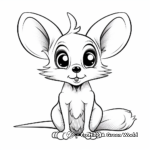



Realistic Kangaroo Rat Coloring Pages


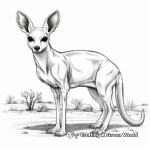
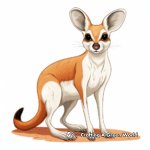
Kid-Friendly Cartoon Kangaroo Rat Coloring Pages
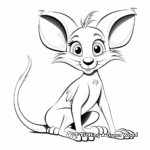
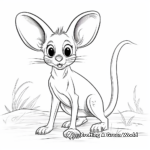


Detailed Kangaroo Rat Coloring Pages for Adults
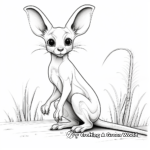
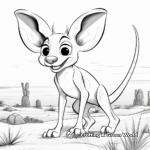

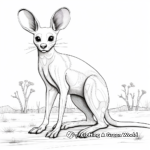
Simple Kangaroo Rat Coloring Pages for Children


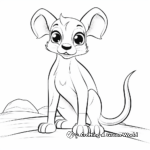
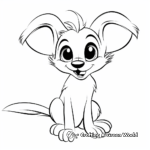
Kangaroo Rat in the Desert: Scenery Coloring Pages


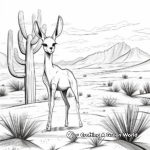

Abstract Kangaroo Rat Coloring Pages for Artists
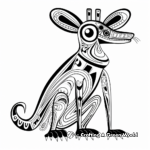

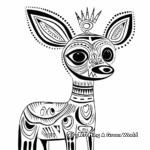

Kangaroo Rat Family Coloring Pages: Male, Female, and Pups
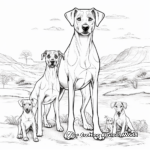
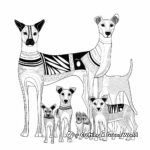
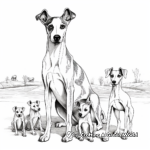
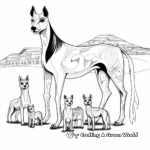
Active Kangaroo Rat Coloring Pages

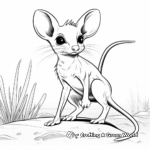
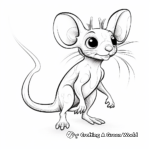
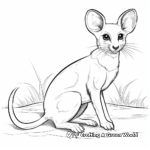
Kangaroo Rat Eating Seeds Coloring Pages
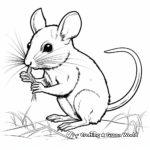
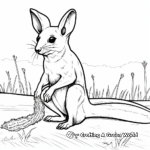
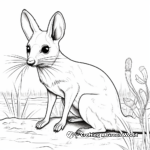
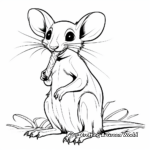
Kangaroo Rat Jumping Coloring Pages
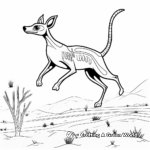

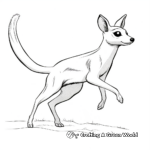

Cute Baby Kangaroo Rat Coloring Pages
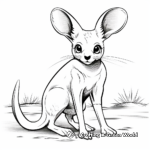
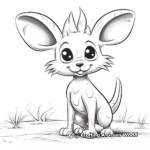
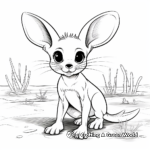

Exotic Kangaroo Rat Coloring Pages


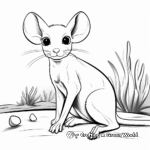
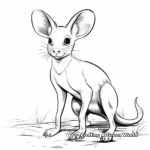
Night-Time Kangaroo Rat Coloring Pages

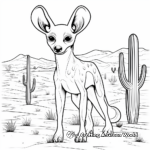
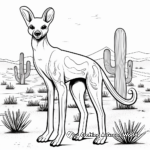

Kangaroo Rat Habitat Coloring Pages
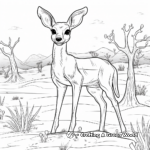



Can you provide some interesting facts about the kangaroo rat that I could incorporate into my art?
Kangaroo rats are adapted to arid desert environments and have a remarkable ability to survive without drinking any water. They get their moisture requirements from the seeds they eat. These rats can leap up to 9 feet in one jump when avoiding predators. Including some desert plants or indicating shadows to show its nocturnal habits could provide some interesting elements to your artwork.
Are there any remarkable features of the kangaroo rat I should pay attention to while coloring?
The kangaroo rat has long, large hind feet which it uses for hopping, and a long tail used for balance and steering as it moves. Showing emphasis on these features, while keeping the front feet small, will help keep the coloring realistic. They also have large cheek pouches to store food which can be given a slight bulge to indicate this.
Can you provide some interesting facts about the kangaroo rat that I could incorporate into my art?
Kangaroo rats are adapted to arid desert environments and have a remarkable ability to survive without drinking any water. They get their moisture requirements from the seeds they eat. These rats can leap up to 9 feet in one jump when avoiding predators. Including some desert plants or indicating shadows to show its nocturnal habits could provide some interesting elements to your artwork.
How can I add more detail and realism to my kangaroo rat coloring?
Adding texture to the fur can help provide a more realistic look. Using differing shades of brown and blending them in areas to show where the body curves can enhance the three-dimensional effect. Additionally, lightly coloring the area around the large eyes and nose in a pink hue can give a more lifelike appearance.
Are there any remarkable features of the kangaroo rat I should pay attention to while coloring?
The kangaroo rat has long, large hind feet which it uses for hopping, and a long tail used for balance and steering as it moves. Showing emphasis on these features, while keeping the front feet small, will help keep the coloring realistic. They also have large cheek pouches to store food which can be given a slight bulge to indicate this.
Can you provide some interesting facts about the kangaroo rat that I could incorporate into my art?
Kangaroo rats are adapted to arid desert environments and have a remarkable ability to survive without drinking any water. They get their moisture requirements from the seeds they eat. These rats can leap up to 9 feet in one jump when avoiding predators. Including some desert plants or indicating shadows to show its nocturnal habits could provide some interesting elements to your artwork.
Tips For Coloring Kangaroo Rat
What colors should I use for a kangaroo rat coloring page?
Kangaroo rats typically have a sandy brown color fur on their back and sides with a whitish color on their belly. Their feet are usually white and their tails are often darker in color, usually brown, towards the tip. They have large, dark eyes which can be colored in dark brown or black.
How can I add more detail and realism to my kangaroo rat coloring?
Adding texture to the fur can help provide a more realistic look. Using differing shades of brown and blending them in areas to show where the body curves can enhance the three-dimensional effect. Additionally, lightly coloring the area around the large eyes and nose in a pink hue can give a more lifelike appearance.
Are there any remarkable features of the kangaroo rat I should pay attention to while coloring?
The kangaroo rat has long, large hind feet which it uses for hopping, and a long tail used for balance and steering as it moves. Showing emphasis on these features, while keeping the front feet small, will help keep the coloring realistic. They also have large cheek pouches to store food which can be given a slight bulge to indicate this.
Can you provide some interesting facts about the kangaroo rat that I could incorporate into my art?
Kangaroo rats are adapted to arid desert environments and have a remarkable ability to survive without drinking any water. They get their moisture requirements from the seeds they eat. These rats can leap up to 9 feet in one jump when avoiding predators. Including some desert plants or indicating shadows to show its nocturnal habits could provide some interesting elements to your artwork.
Tips For Coloring Kangaroo Rat
What colors should I use for a kangaroo rat coloring page?
Kangaroo rats typically have a sandy brown color fur on their back and sides with a whitish color on their belly. Their feet are usually white and their tails are often darker in color, usually brown, towards the tip. They have large, dark eyes which can be colored in dark brown or black.
How can I add more detail and realism to my kangaroo rat coloring?
Adding texture to the fur can help provide a more realistic look. Using differing shades of brown and blending them in areas to show where the body curves can enhance the three-dimensional effect. Additionally, lightly coloring the area around the large eyes and nose in a pink hue can give a more lifelike appearance.
Are there any remarkable features of the kangaroo rat I should pay attention to while coloring?
The kangaroo rat has long, large hind feet which it uses for hopping, and a long tail used for balance and steering as it moves. Showing emphasis on these features, while keeping the front feet small, will help keep the coloring realistic. They also have large cheek pouches to store food which can be given a slight bulge to indicate this.
Can you provide some interesting facts about the kangaroo rat that I could incorporate into my art?
Kangaroo rats are adapted to arid desert environments and have a remarkable ability to survive without drinking any water. They get their moisture requirements from the seeds they eat. These rats can leap up to 9 feet in one jump when avoiding predators. Including some desert plants or indicating shadows to show its nocturnal habits could provide some interesting elements to your artwork.
Related Coloring Pages
About Our Coloring Pages
All of the coloring pages displayed on this page are free for personal use. You have our express permission to download, print, color, and enjoy these pages at your own leisure and convenience. Each piece of artwork on this page has been chosen to inspire creativity and make the world of coloring engaging and enjoyable for all age groups. This permission extends to small non-commercial group settings like classrooms or therapy settings - you have our permission to print these for free distribution to small groups.
This permission is granted strictly for non-commercial uses. These images can not be resold, republished, or used for commercial purposes in any form or method. You may not sell the final colored versions, or use them as design elements in a product that is sold. Please contact us for commercial licensing options.
Our priority is to support and inspire creativity among those who love to color. Please join us in honoring this purpose by adhering to these guidelines. Happy Coloring!
